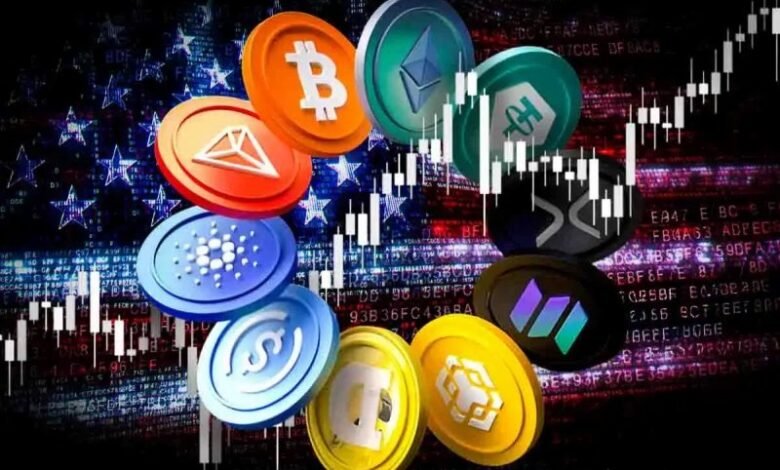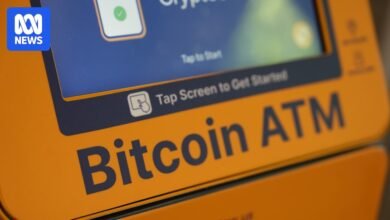Global crypto market: A turbulent week of sell-offs, innovation, and regulation

The global cryptocurrency market experienced a volatile week, marked by sharp sell-offs, regulatory breakthroughs, corporate maneuvering, and new signs of mainstream adoption, News.az reports.
Bitcoin and Ethereum, the two largest digital assets, led a market-wide correction that erased billions of dollars in value, while major tech firms and regulators announced initiatives that could shape the industry’s long-term trajectory.
Massive Sell-Off Shakes Market
Early in the week, the crypto sector was rattled by one of its sharpest downturns in recent months. A wave of liquidations swept across derivatives exchanges, wiping out more than $1.7 billion in leveraged positions. Bitcoin plunged below the $110,000 mark, dropping more than 5 percent in a single session and over 10 percent from its August highs. Ethereum also sank, accounting for nearly 30 percent of the liquidations. Altcoins such as Solana, Dogecoin, and FLOKI registered double-digit losses. The downturn pulled the overall crypto market capitalization below $4 trillion, underscoring the fragility of leveraged positions in an overheated market.
Corporate Treasuries and Buybacks
As markets slumped, companies that hold large volumes of cryptocurrencies on their balance sheets—often referred to as “crypto-treasury firms”—came under pressure. Several of these firms saw their stock prices fall below the book value of their crypto holdings. To counter investor concerns, some initiated share buybacks, a rare move that highlighted how intertwined corporate valuations have become with volatile digital assets. U.S. regulators, including the SEC and FINRA, have opened investigations into suspicious trading activity linked to these treasury disclosures, signaling tighter oversight ahead.
Innovation and Adoption Drive Headlines
Amid the sell-off, major corporations and institutions made announcements that point to the deepening integration of crypto into global finance and technology. Alphabet (Google) unveiled its Agent Payments Protocol (AP2), a system developed with Mastercard, PayPal, and Coinbase that allows AI agents to autonomously transact using cryptocurrencies and stablecoins. Analysts hailed it as a potential turning point in real-world adoption, bridging artificial intelligence with blockchain-based payments.
Meanwhile, Anthony Scaramucci, through a new vehicle named AVAX One, launched a $550 million fundraising effort to acquire large volumes of Avalanche (AVAX) tokens. The initiative reflects the rise of specialized “crypto treasuries” as a new asset class, despite concerns about governance and transparency.
Regulatory Shifts in Global Hubs
The week also brought significant regulatory news. The UK Financial Conduct Authority (FCA) announced that it will lift restrictions on crypto Exchange-Traded Notes (ETNs) starting October 8, giving retail investors regulated pathways to crypto exposure. In the Middle East, the United Arab Emirates was officially named one of the world’s top five crypto hubs, thanks to its Virtual Assets Regulatory Authority (VARA), zero tax regime, and state-backed digital dirham initiative.
Altcoins, Yield, and Tokenization
Investor attention shifted toward alternative cryptocurrencies, with Grayscale’s quarterly research report showing that altcoins outperformed Bitcoin across multiple sectors in Q3. This fueled speculation about the arrival of another “alt season.” XRP holders also gained new opportunities: the launch of mXRP, a protocol offering yields of 6–8 percent on-chain.
Stablecoin innovation continued as Tether unveiled a new U.S.-regulated dollar-pegged token dubbed USA₮, aiming to reassure regulators and attract institutional users. In parallel, the London Stock Exchange approved a new Bitcoin staking Exchange-Traded Product (ETP), while Ripple, DBS Bank, and Franklin Templeton launched tokenized fund initiatives.
Politics and Lobbying Enter Center Stage
In the United States, Coinbase strengthened its political arm by hiring David Plouffe, former senior adviser to Vice President Kamala Harris, as a strategic adviser. The move underscored how crypto firms are no longer limiting their influence to financial markets but are increasingly shaping debates in Washington and beyond.
A Market at a Crossroads
This combination of volatility, corporate maneuvering, and regulatory evolution paints a picture of a market at a crossroads. On one hand, the sharp sell-off exposed vulnerabilities in speculation and leverage, reminding investors of crypto’s inherent volatility. On the other, Google’s payment protocol, regulatory recognition in the UK and UAE, and new tokenized financial products suggest the asset class is entering a new phase of institutionalization.
Top 10 Highlights of the Week:
-
$1.7B+ liquidations wiped out leveraged positions across exchanges.
-
Google launched Agent Payments Protocol (AP2) for AI-agent crypto transactions.
-
Anthony Scaramucci unveiled AVAX One, a $550M crypto treasury fund.
-
UAE officially recognized as a Top 5 global crypto hub.
-
UK to lift restrictions on crypto ETNs for retail investors in October.
-
Altcoins outperformed Bitcoin in Q3, fueling an “alt season” narrative.
-
Bitcoin fell below $110,000, shaking market confidence.
-
XRP holders gained yield opportunities with mXRP (6–8%).
-
Tether launched USA₮, a regulated U.S. dollar stablecoin.
-
Coinbase hired David Plouffe, signaling increased political lobbying.
Looking Ahead
Analysts warn that Bitcoin’s $110,000 support level will be crucial in the coming days. If breached, further downside could follow, though some argue the correction was a healthy consolidation after an overheated summer rally. Regulatory investigations and corporate strategies will continue to shape market confidence, while innovation—such as Google’s AP2—could accelerate crypto’s integration into everyday life.
For investors and policymakers alike, the past week demonstrated the dual reality of crypto: a volatile, risk-heavy asset class that is also rapidly embedding itself into the architecture of global finance and technology.
Credit: Source link






